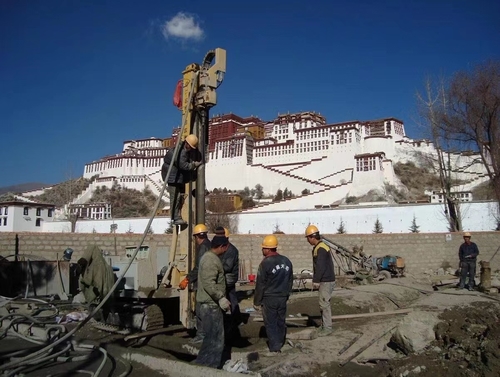
August 20, 2022

THE 7 BEST WAYS TO CARE FOR YOUR DRILLING EQUIPMENT
1. GREASE
Numerous lubrication locations on your drill minimize early wear and ensure smooth operation. Maintaining the machine while it is in use requires routine lubrication. On sometimes, popular grease locations on your drill that are being used on the job site are missed during routine maintenance. When your equipment isn't being used on the job site, it's a perfect chance to inspect it carefully and make sure everything is properly oiled.
2. SET CHAIN TIGHTNESS
On occasion, the feed rail chain on your jet grouting drilling rig may come loose. The primary sprocket of the feed rail chain wears down as a result of the machine's normal movement during drilling. A 1/16th brass bushing in this sprocket is frequently the root of a slack chain. First, ensure sure the brass ring inside the sprocket is in position and not showing any indications of wear before checking the chain's tightness. The chain can then be tightened as usual after that. By sliding the drifter all the way forward and examining the chain's midsection for rigidity, you may evaluate the tension.
3. CHECK YOUR LUBRICATOR
It's crucial to replenish the rock drill oil in your line oiler during your downtime. You should check the oil level in your line oiler twice daily while drilling. Use the white paper towel test to ensure that oil is passing through your line oiler while inspecting it in between jobs.
4. CLEAN QUICK CONNECTS
It is nearly impossible to keep your fast connections clean even when they are connected to a job site because there is never a clean place there. When re-attaching the quick connections to your machine, it's crucial to clean them even though they essentially always remain dirty. They can become quite dirty between uses from the mixture of hydraulic oil and dirt, and you don't want that filth to enter your hydraulic line.
5. CHECK EXTENSION CLAMP PLATES
On your feed rail, there are safety plates called extension clamp plates. Between the steel of your feed rail and the steel of your feed rail extension piece, these plates act as a buffer. By using these plates, the two feed rail steel sections are kept from grating against one another as they move. You'll note that the feed rail extension jiggles more when extended and repositioned as the clamp plates deteriorate.
6. CHECK WEARPADS
The shims on your rock drill, which are found on the mounting assembly for the motor, enable the motor to move easily along the feed rail. Due to the frequent motion, these wearpads deteriorate over time. It's critical to routinely replace these wearpads if you want to keep your machine operating for a long time.
7. LOOK FOR WEAR ON YOUR CENTRALIZER GATES
Your centralizer gates deteriorate during the course of a job as they play a crucial role in the movement of the drill. To keep your machine operating at its best, inspect your centralizer gates in between jobs and replace them when they begin to deteriorate.